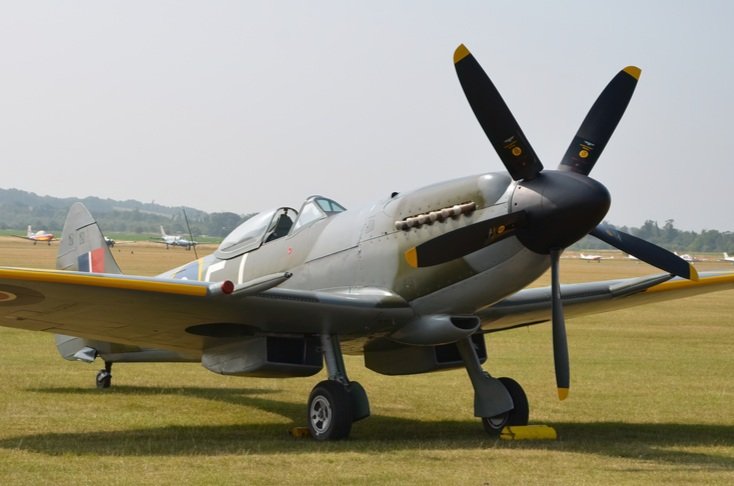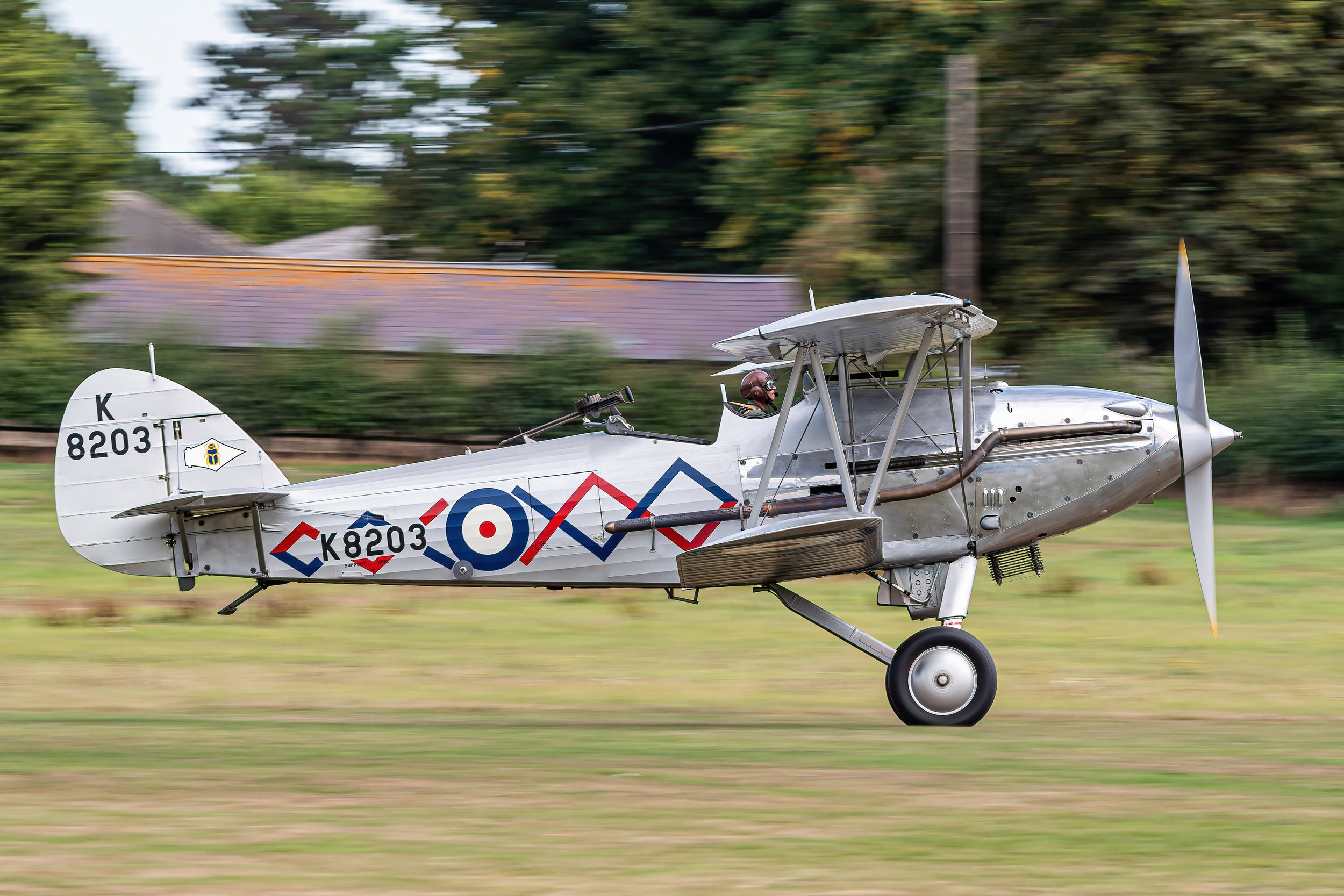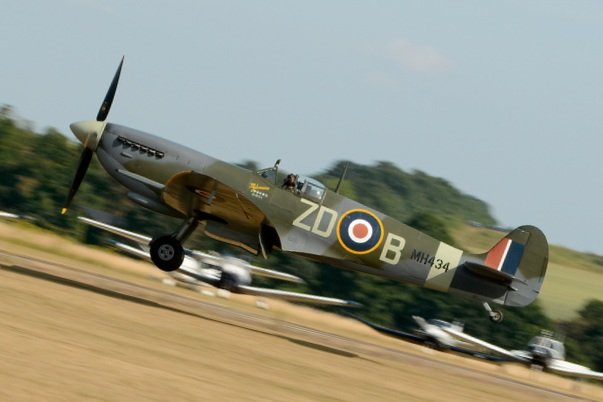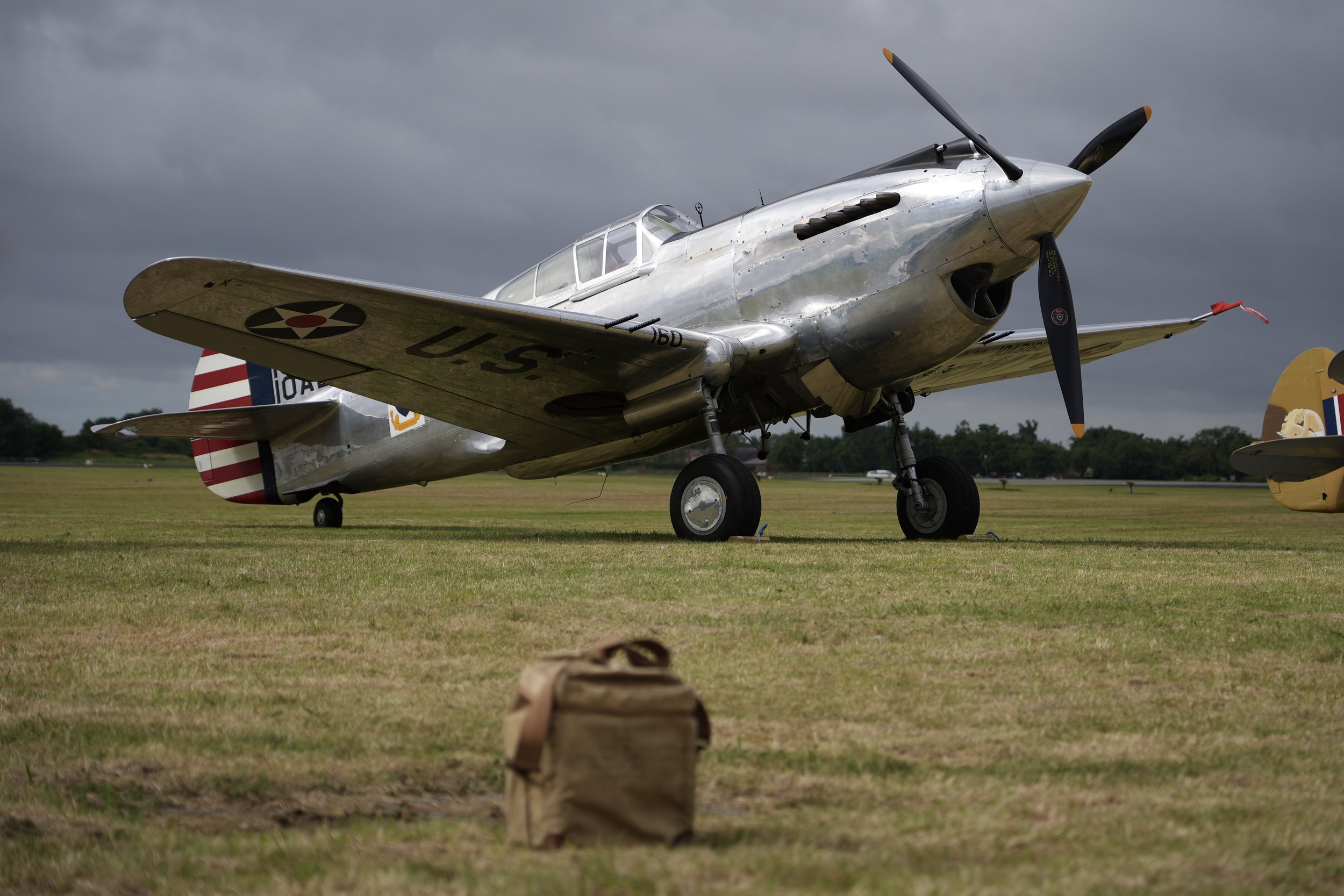Spitfire G-LFVB
Year built
1942
Aircraft
Spitfire LF.Vb
Base
Duxford Airfield
The Fight Collection’s Mk.V Spitfire is one of the most credited historic aircraft left anywhere in the world with impressive SEVEN confirmed kills. EP120 was built at the Castle Bromwich factory where she was probably test flown by the legend that was Alex Henshaw. She was taken on charge by the RAF in May 1942 with 45 MU at Kinloss in Scotland. She was assigned to 501 Sqn the following month and scored six of her confirmed kills with Sqn Ldr Geoffrey Northcott at the helm. A ground collision saw her return to Castle Bromwich for repair following which she was allocated to 19 Sqn in Cornwall. In April 1944 she was taken on charge with 402 Sqn ‘City of Winnipeg’ RCAF, coded AE-A, which are the colours she wears today. In June 1944 EP120 went to 33 MU at Lyneham, before moving onto 53 OTU at Kirton in Lindsey. Following a period as a ground instructional airframe, EP120 served as gate guard at a number of RAF stations until 1967 when she was used as a static aircraft in the ‘Battle of Britain’ movie. Following her first silver screen experience, she was back guarding the gate, at RAF Wattisham this time until 1989 when she was transported to St. Athan along with all the rest of the gate guard Spitfires. EP120 remained in storage at St. Athan until she joined The Fighter Collection fleet in 1993. Following a full restoration, EP120 returned to the skies in September 1995 and has been a popular performer with both the crowds and pilots ever since.
| Back to Top |
Supermarine Spitfire LF.Vb
The Supermarine Spitfire is a British single-seat fighter aircraft that was used by the Royal Air Force and other Allied countries before, during, and after World War II. Many variants of the Spitfire were built, using several wing configurations, and it was produced in greater numbers than any other British aircraft. It was also the only British fighter produced continuously throughout the war. The Spitfire continues to be popular among enthusiasts; nearly 60 remain airworthy, and many more are static exhibits in aviation museums throughout the world.
The Spitfire was designed as a short-range, high-performance interceptor aircraft by R. J. Mitchell, chief designer at Supermarine Aviation Works, which operated as a subsidiary of Vickers-Armstrong from 1928. Mitchell pushed the Spitfire's distinctive elliptical wing with cutting-edge sunken rivets (designed by Beverley Shenstone) to have the thinnest possible cross-section, helping give the aircraft a higher top speed than several contemporary fighters, including the Hawker Hurricane. Mitchell continued to refine the design until his death in 1937, whereupon his colleague Joseph Smith took over as chief designer, overseeing the Spitfire's development throughout its multitude of variants.
During the Battle of Britain, from July to October 1940, the public perceived the Spitfire to be the main RAF fighter, though the more numerous Hurricane shouldered a greater proportion of the burden against Nazi Germany's air force, the Luftwaffe. However, Spitfire units had a lower attrition rate and a higher victory-to-loss ratio than those flying Hurricanes because of Spitfire's higher performance. During the battle, Spitfires were generally tasked with engaging Luftwaffe fighters—mainly Messerschmitt Bf 109E-series aircraft, which were a close match for them.
After the Battle of Britain, the Spitfire superseded the Hurricane to become the backbone of RAF Fighter Command, and saw action in the European, Mediterranean, Pacific, and South-East Asian theatres. Much loved by its pilots, the Spitfire served in several roles, including interceptor, photo-reconnaissance, fighter-bomber, and trainer, and it continued to serve in these roles until the 1950s. The Seafire was a carrier-based adaptation of the Spitfire that served in the Fleet Air Arm from 1942 through to the mid-1950s. Although the original airframe was designed to be powered by a Rolls-Royce Merlin engine producing 1,030 hp (768 kW), it was strong enough and adaptable enough to use increasingly powerful Merlins and, in later marks, Rolls-Royce Griffon engines producing up to 2,340 hp (1,745 kW). As a result, the Spitfire's performance and capabilities improved over the course of its service life.
The Spitfire MkV was one of the most successful ‘stop-gaps’ ever introduced into Royal Air Force Service. Over one hundred and forty RAF squadrons operated the type. It served on all battlefronts and was supplied to nine other countries including the Soviet Union and the United States.
During 1940 the Spitfire MkI and MkII barely maintained superiority over the Messerschmitt Bf109E so the Air Staff turned their attention to the question of a replacement. Their preferred successor was the MkIII, fitted with a Merlin XX engine and incorporating a new wing design.
Realising it would take time to tool up for a new production aircraft and because of problems with the Merlin XX, the Air Ministry asked Rolls-Royce, as an interim measure, to install the Merlin 45 engine in the Spitfire MkI airframe. Between 1941 and 1943 over 6500 of this MkV version were produced. The spitfire MkIII never did go into production but some of the new design features intended for it were incorporated into the MkV
By 1944 only five squadrons remained in service. Even so, two Spitfire MkV squadrons provided gunfire direction on 6 June 1944 for naval units off the D-Day beached of Normandy.
| Back to Top |




| Back to Top |

































